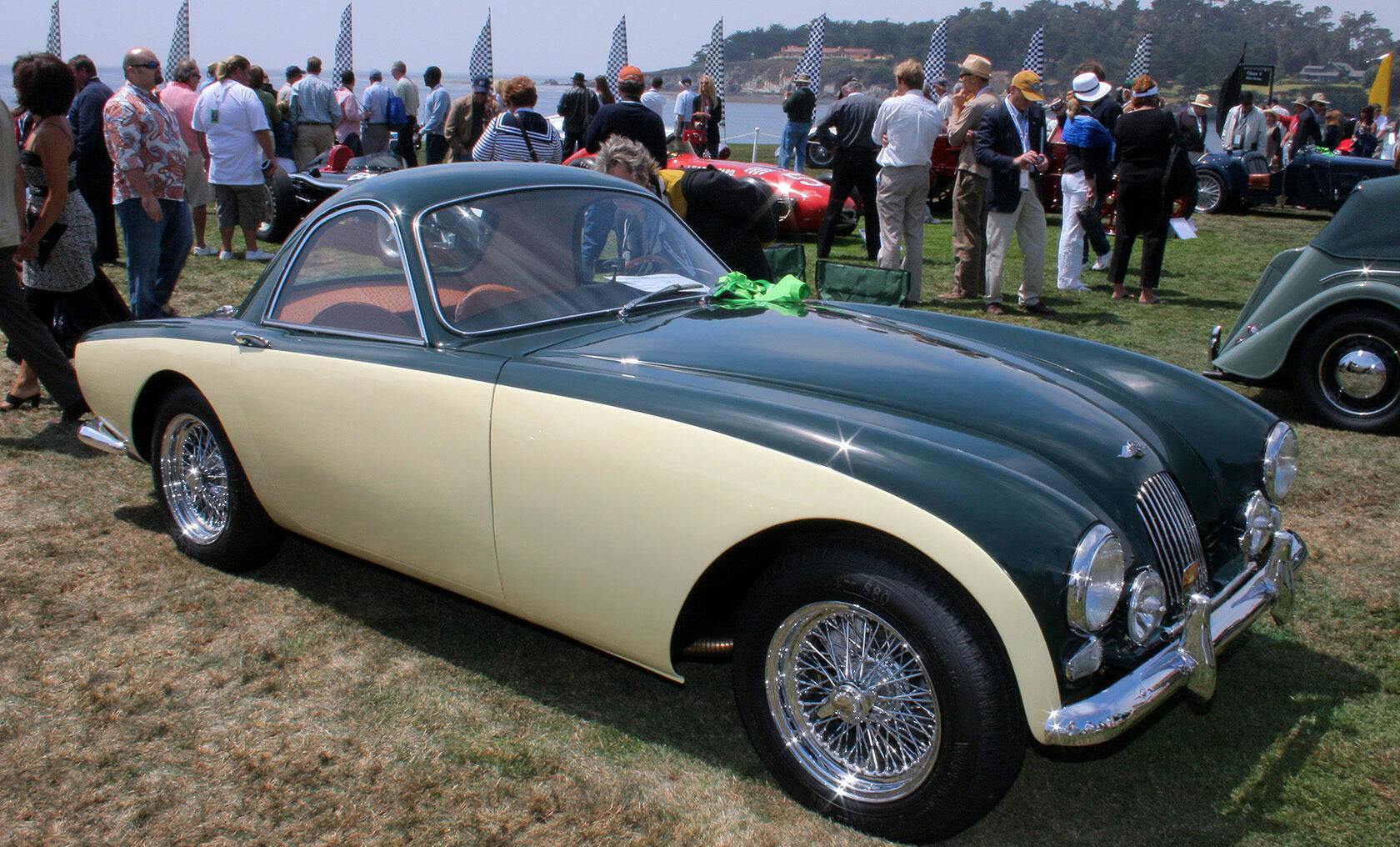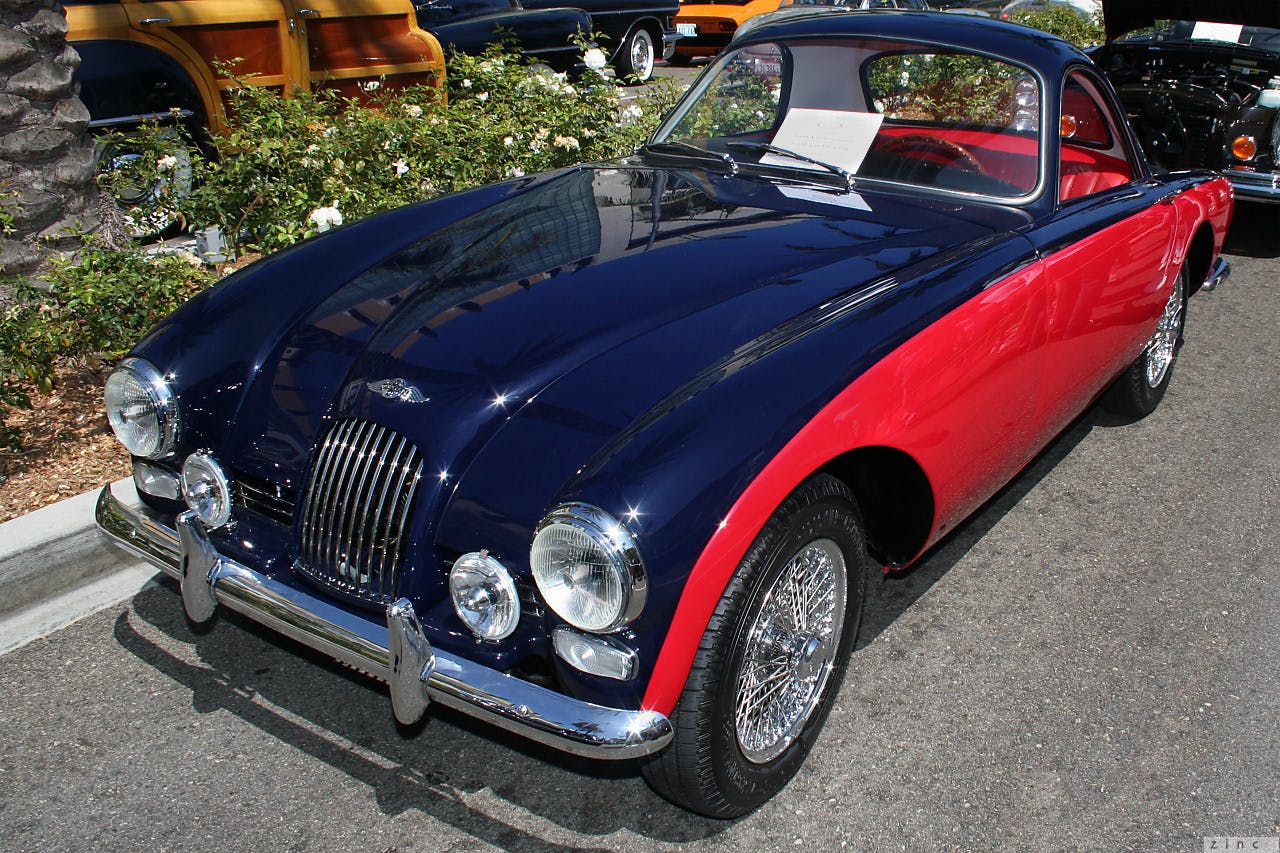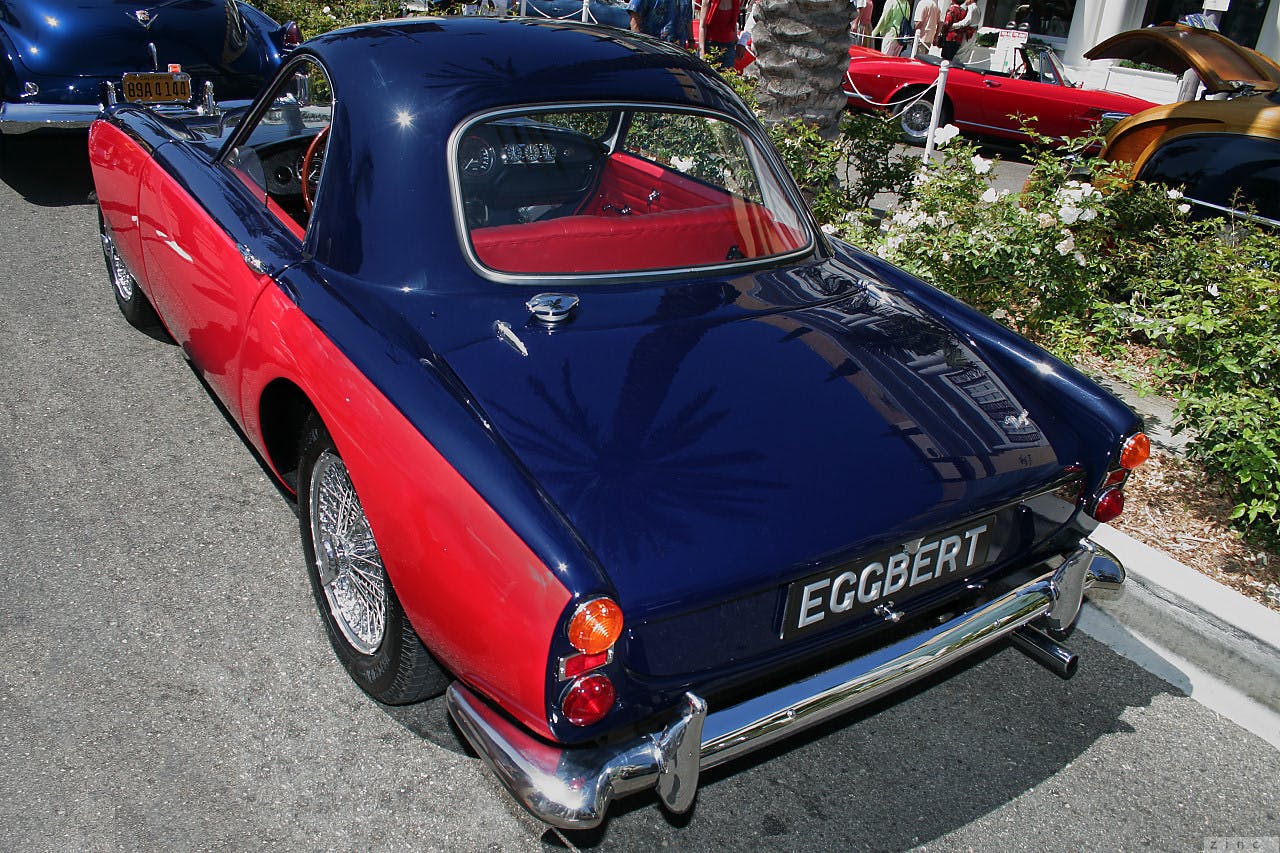The Morgan Plus 4 Plus is even cooler than you remember
You could be forgiven for thinking that Morgan didn’t produce a fixed-head car until relatively recently, with the introduction of the Aeromax in 2005. But that’s not the case, because back in the Sixties this storied British car maker tried to offer something new: a fixed-head car known as the Plus 4 Plus. The English company got its fingers badly burned in the process—so much that it waited for the better part of half a century before it tried the same thing again.
Founded in 1909 as a maker of three-wheelers, Morgan introduced its first four-wheeler 25 years later. By the time the Plus 4 Plus was unveiled at the 1963 Earls Court Motor Show, Morgan had been building cars for more than half a century. They were all built using the same technique: an ash frame over which steel panels were attached. All Morgans were open-topped with only rudimentary weather protection to that point, so when the fiberglass-bodied Plus 4 Plus was unveiled, Morgan purists were horrified.
Even within Morgan there was dissent over the Plus 4 Plus. In the 1950s Peter Morgan had started to consider the possibility of Morgan producing a fully enclosed car, having seen what Lotus had done with the fiberglass-bodied Elite, Jaguar with its XK140/150 coupé, and MG with the A coupé. But his father and company founder Henry (HFS Morgan) wasn’t convinced; he reckoned that the benefits and durability of fiberglass were not proven. Knowing that the Morgan Plus 4 chassis was somewhat flexible, he was sure that the plastic bodywork would soon crack.

Peter and Henry couldn’t agree on whether or not to embrace this brave new world of plastic-bodied cars, but in 1959 Henry died, leaving his son to run the company. Within a couple of years Peter decided to go for it, and towards the end of 1962 he explored the possibility of an enclosed fiberglass-bodied Morgan with industry experts EB Plastics. This Staffordshire-based company was behind various Ford Pop-based bodyshells as well as the EB Debonair sports saloon, and it also made the cabs for Foden and ERF Trucks plus Austin-Parkinson electric vehicles, so it had a pretty good idea of working with plastics.
Reassured by the company’s experience, Peter Morgan commissioned EB Plastics to design and build a prototype fixed-head Morgan, to be based on the existing Plus 4 chassis. The oily bits had to be carried over wholesale, the Morgan family look had to be retained, and the front overhang had to be minimal.
John Edwards, EB Plastics founder, came up with some sketches for Peter Morgan, who reckoned that they hit the spot perfectly. The only chassis change needed would be a pair of sheet steel extensions that bolted either side of the engine, linking the front suspension to the bulkhead, resulting in a much sturdier structure that reduced the chances of the bodyshell cracking. Next step was to create a scale model, and with Peter Morgan happy that things were moving in the right direction, EB Plastics set about building a running prototype on a Morgan-supplied Plus 4 chassis; all production cars would be made in Morgan’s Malvern factory though, with the bodyshells shipped in.
By March 1963 the prototype was complete and Peter Morgan immediately embarked on a road trip with his wife, taking in France and Spain. The extra-stiff front end showed up the unforgiving nature of the Plus 4’s suspension, but other than that the car acquitted itself pretty admirably. John Bolster, technical editor of Autosport, was certainly impressed: “In a veritable cloudburst, I drove along Ross Spur in sheets of spray, reaching 105 mph. The famous controllability of the Morgan was fully in evidence, fast curves being taken at speed in complete confidence.” Such positivity was typical of the press coverage, with reviews citing the car’s excellent build quality.

Despite rave reviews, the Plus 4 Plus was unveiled to gasps of horror at the October 1963 motor show, priced at £1275. With the regular Plus 4 costing just £816, potential buyers reckoned that was a hefty premium to pay for something they considered ugly, even if it was £347 less than Lotus’s rather more sophisticated Elite. Peter Morgan later disclosed that he only ever intended to make and sell 50 examples of the Plus 4 Plus, and the pricing reflected that. Unfortunately for him, 50 copies was rather optimistic …
In a bid to prove the Plus 4 Plus’s worth, Peter Morgan set about racing and rallying the prototype. He and the car performed well and by 1966 it had notched up 50,000 miles, but the Plus 4 Plus’s awkward proportions and the fact that it broke with tradition, meant that it was never going to fly. Over the next four years just 26 examples were made before Morgan cut its losses and struck the Plus 4 Plus from its price list. It would be more than 40 years before the company offered another fixed-head model again. and even then it was only on a limited basis.
***
Check out the Hagerty Media homepage so you don’t miss a single story, or better yet, bookmark it. To get our best stories delivered right to your inbox, subscribe to our newsletters.








It’s not a bad looking car. I think if you cut the top off and put a nice convertible top it would look pretty cool.
It’s beautiful compared to the Daimler Dart of the same era.
I believe the red and black one was originally a Sterne Motors car from Burnaby, British Columbia, which sat in their showroom for a long time before it was sold. I came across it sitting in a ditch near Princeton, B.C., in, I think, the early 80s. It was in it’s original, black condition. I next saw it at the first All British Field Meet at VanDusen Gardens in 1986, by which time it had been painted robin’s egg blue. It was the last I saw of it until it re-emerged some years ago from an ultra restoration in the red and black colour. It was the subject of a comprehensive profile in Classic and Sportscar some years ago.
It looks droopy, especially on the rear to me. It looks better from the back than from the front. Not my favorite Morgan.
The roof and side windows look like a derby hat. Not a neat design.
It is actually red and Navy Blue….I showed it, I believe, 8 times…Best in Class all 8 times…our shop did the restoration on it and on Bob Cole’s yellow and green one pictured below in the photos.
I guess Dennis told the naysayers…beautiful car and excellent restoration. I would be delighted to have one and wow the crowds. Cool car.
Beautiful car and gorgeous restoration. In my opinion, one of the reasons I personally go to a C&C is to see unique machines like this that you will never see on the road. Whether it be beautifully restored or a driven beater with original patina is why. I don’t bother with new Ferrari’s, Porsche’s, Lambo’s. etc. as I can go to a dealer and see one.
Have to agree , compared to the Daimler Dart this Morgan is a visual masterpiece.
NO.